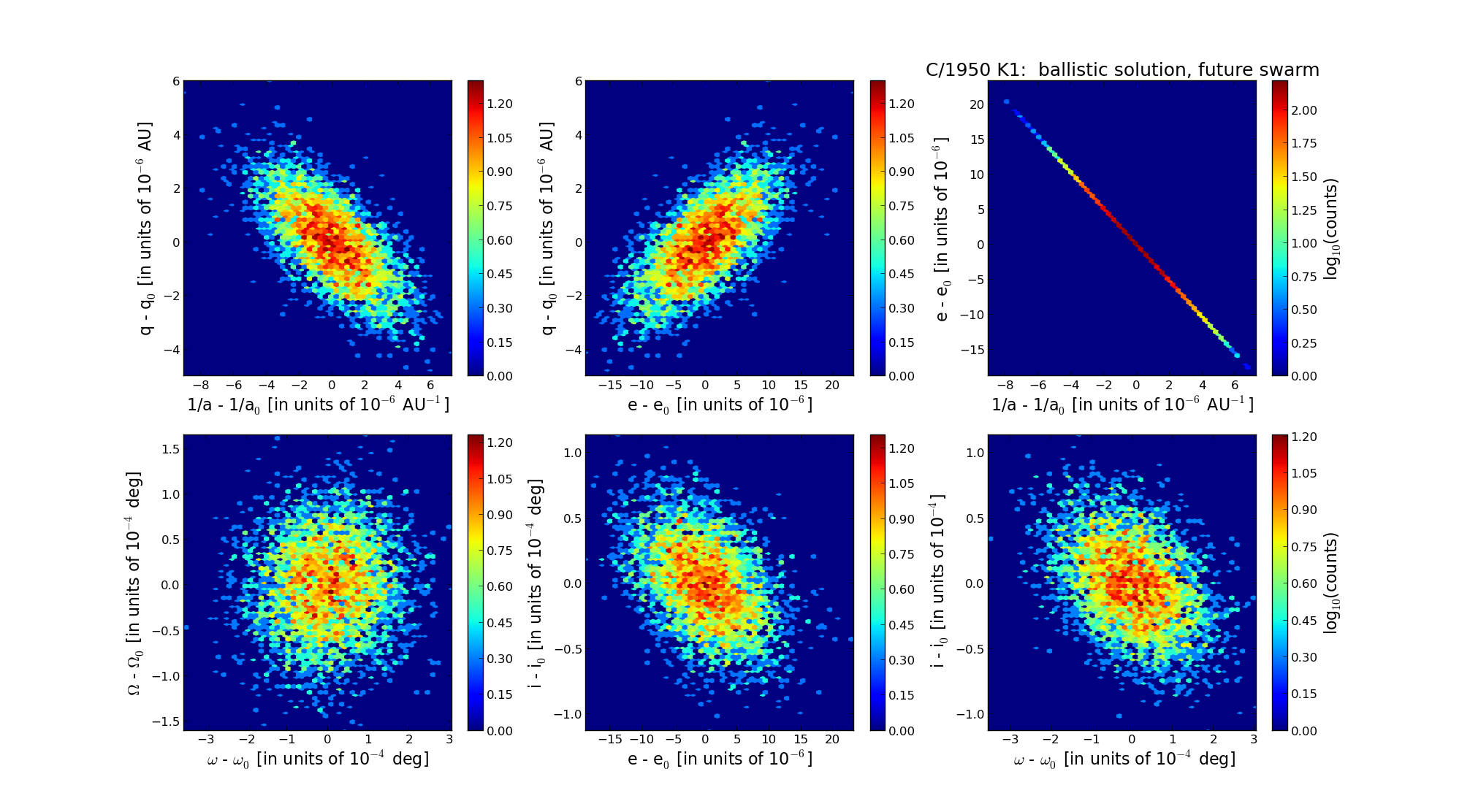| Solar System Dynamics & Planetology Group |
 |
C/1950 K1 Minkowski |  |
| Solar System Dynamics & Planetology Group |
 |
C/1950 K1 Minkowski |  |
| number of observations | 254 |
| number of residuals | 466 |
| data interval | 1950 May 27 — 1953 Jan. 19 |
| rms [arcsec] | 1.28 |
| orbit quality class | 1a |
| Epoch (TT) | 19510203.0 | = JD 2433680.5 |
| time of perihelion passage (TT) | 19510115.043740 | ± 0.000378 |
| perihelion distance | 2.57232857 | ± 0.00000139 |
| eccentricity | 1.00121061 | ± 0.00000556 |
| argument of perihelion [deg] | 192.468633 | ± 0.000092 |
| longitude of the ascending node [deg] | 38.890330 | ± 0.000047 |
| inclination [deg] | 144.155175 | ± 0.000031 |
| inverse semimajor axis [10-6 au-1] | -470.63 | ± 2.16 |

| Epoch (TT) | 16490804 | |
| time of perihelion passage (TT) | 19510115.032274 | ± 0.000373 |
| perihelion distance | 2.57130432 | ± 0.00000141 |
| eccentricity | 0.99988404 | ± 0.00000560 |
| argument of perihelion [deg] | 192.367874 | ± 0.000093 |
| longitude of the ascending node [deg] | 38.749976 | ± 0.000047 |
| inclination [deg] | 144.145001 | ± 0.000031 |
| inverse semimajor axis [10-6 au-1] | 45.10 | ± 2.18 |

| Epoch (TT) | 22550321 | |
| time of perihelion passage (TT) | 19510114.572471 | ± 0.000396 |
| perihelion distance | 2.57371784 | ± 0.00000139 |
| eccentricity | 0.99928354 | ± 0.00000561 |
| argument of perihelion [deg] | 192.416020 | ± 0.000093 |
| longitude of the ascending node [deg] | 38.885979 | ± 0.000048 |
| inclination [deg] | 144.138428 | ± 0.000031 |
| inverse semimajor axis [10-6 au-1] | 278.37 | ± 2.18 |